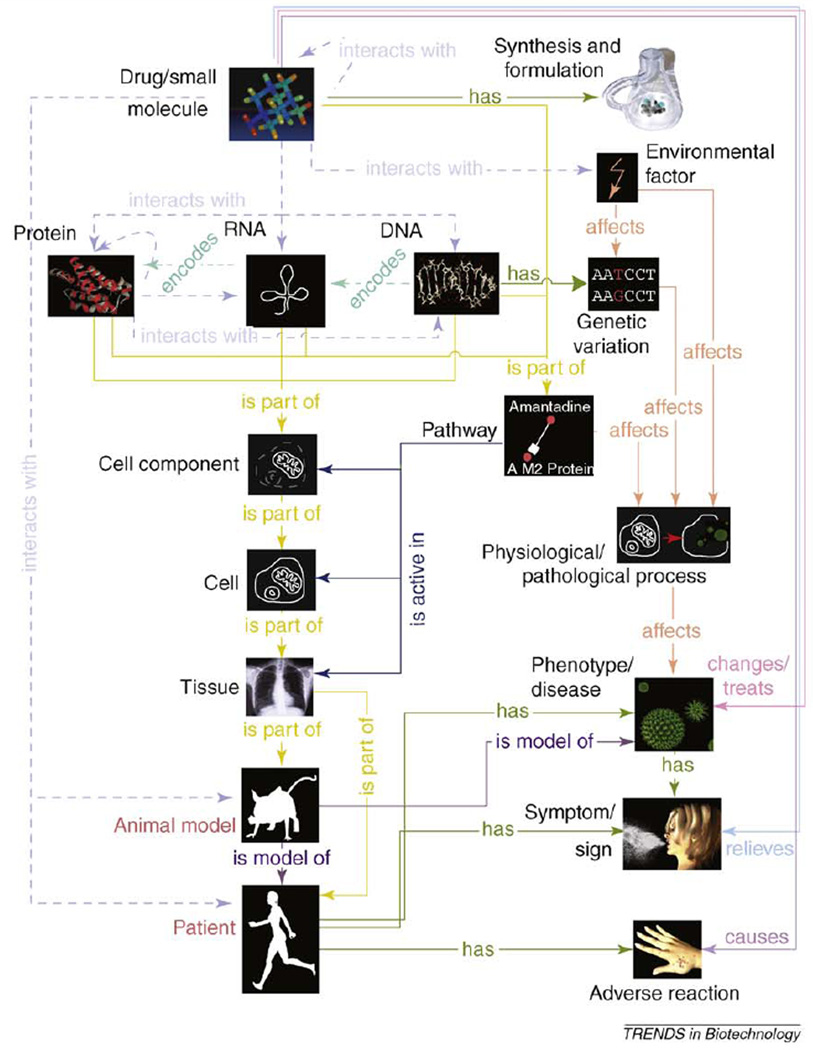Figure 2.
Provisional ontology for drug discovery. The ontology features a concept for drugs or small chemical molecules and another for drug synthesis and formulation. Furthermore, a drug is known to target a specific molecule: protein, RNA, or DNA. A drug target is biologically active in the context of a pathway, cellular component, cell, and tissue. The drug is typically tested using an animal model for a specific human phenotype, usually a disease. A patient or human with the disease phenotype has a set of symptoms/signs, some of which can be unrelated to the disease. Drugs treat patients, but can cause adverse reactions. Finally, we link the patient’s drug response to genetic variation in her genome and environmental factors encountered. These concepts are linked to directed or undirected relations, such as encodes (DNA encodes RNA), interacts with (drug–drug interactions), is part of (a cell is part of a tissue), affects (environmental factor affects genetic variation) and several others. We illustrate our ontology with the drug amantadine, which acts as a prophylactic agent against several RNA virus-induced influenzas that afflict the respiratory system and result in coughing and sneezing. Amantadine can cause a skin rash as a side effect.

